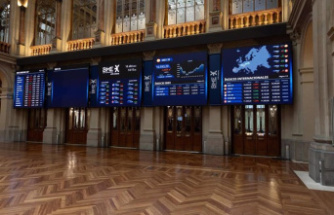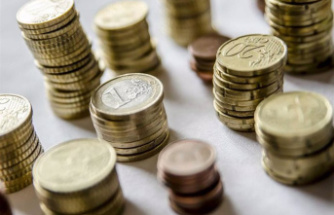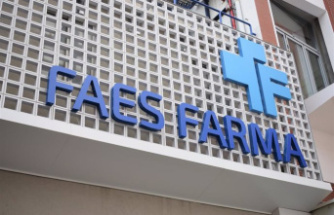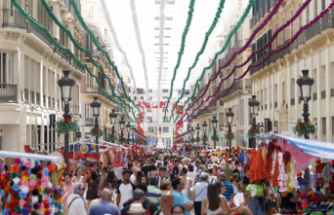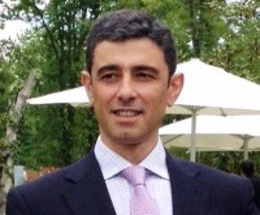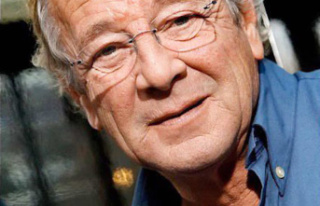The photographic process was officially invented in 1839: that year, Louis-Jacques Mandé Daguerre developed the technique that would bear his name, the daguerreotype. This novelty appeals immediately: many people get started and open their own studio in the big cities. At that time, you had to be both an artist and a chemist to take photos! Let’s discover some processes and Quebec photographers of yesteryear.
At the very beginning, the photographic techniques were laborious: you first had to capture the image on a copper plate covered with silver, then successively use iodine and mercury vapours. From 60 to 100 hours are necessary... to obtain a slightly blurred image. And yet, it is a real revolution.
In the fall of 1840, the Americans Halsey and Sadd set up their studios in Montreal and Quebec. A Mrs. Fletcher published a classified ad in the Montreal Transcript on September 11, 1841, promoting her services in “photogenic art” and claiming to make daguerreotypes as fine as American or European artists. His studio is located at Place d'Armes, in Montreal.
We quickly see the appearance of new photographic processes on glass plates, namely the ambrotype (1854) and the tintype (1856). Almost as complex as the daguerreotype, they nevertheless make it possible to reduce exposure and development times as well as to make copies of the same image.
William Notman is one of the first to open a photography studio in Quebec. From 1856, this immigrant of Scottish origin exercised his talents in Montreal: he immortalized, among other things, the construction work and then the inauguration of the Victoria Bridge. His notoriety – he even received the title of “Queen's photographer” – attracted a large clientele. His sons were also introduced to photography, working in the family studio. During the 1870s, Notman, his sons and his assistants produced approximately 14,000 images per year!
Photography democratizes the art of the portrait. It is also the studio portrait that is the main activity of the first photographers. But the equipment is heavy and cumbersome. Even though there are traveling “daguerreotypers” who go from city to city, it is much more convenient to receive clients in the studio!
It was as portrait painters that Jules-Isaïe Benoît, dit Livernois, and his wife, Élise L’Heureux, began a fruitful career as photographers. The couple opened their daguerreotyping studio in Quebec in 1854. Their clientele particularly liked portraits in “visiting card” format. The son of Élise and Jules-Isaïe, Jules-Ernest Livernois, took over the management of the family business in 1873, then the son of the latter, Jules Livernois, took over the torch in 1898.
Not limited to portraits, Livernois photographers also immortalize monuments, works of art and artefacts, then tourist attractions in Quebec and surrounding regions, whose images are put up for sale in their studios. It is estimated that this family produced more than 300,000 photographs.
Stereoscopy is a technique that creates a three-dimensional effect: two almost identical but slightly offset photos are placed in a device allowing them to be viewed simultaneously, one with the right eye, the other with the left eye. Stereographs became very popular towards the end of the 19th century.
Photographer Louis-Prudent Vallée will make it his specialty. A native of Quebec, he learned the trade in the 1860s, probably with Jules-Isaïe Livernois, then he did an internship in New York. Between 1867 and 1889, Vallée surveyed Quebec City and its surroundings as well as the Saguenay region in his mobile laboratory, drawn by horses. Its stereoscopic views are very popular, especially with tourists!
Women who practice photography independently (outside the marital or family sphere) are quite rare in Quebec. This is however the case of Sally Elizabeth Wood. Having learned photography from William Notman, Wood opened her own studio in Knowlton, her hometown, in 1897. She mainly used glass plate negatives. A significant part of his activity takes place in the studio. His models pose in a very sober way, standing or with a chair, on a painted or plain background.
Wood, however, does not hesitate to move his cameras, lenses, tripods and glass plates to go out and photograph various outdoor establishments as well as landscapes. His works are published as postcards by James Valentine
Originally from England, William Bertram Edwards emigrated to Canada, where he practiced various trades, including that of printer, before enlisting in the army. He opened his photography studio in Quebec in 1917. Although he produced portraits and commercial photos in the studio, Edwards made his mark above all as an outdoor photographer, immortalizing landscapes, buildings and panoramic views. His photos allow us to observe the transformation of the urban landscape. For the first time in 1937, he rented a plane to sketch, from the air, the different boroughs of Quebec City and the surrounding area. Two of his four children support him in his activities.
Despite the various technical innovations of the first half of the 20th century, Edwards will always remain faithful to his cameras and to large format glass negatives, which explains the exceptional sharpness of his images. In 1965, a fire will destroy hundreds of boxes of negatives and negatives... Fortunately, there are still a very large number of them.
Photography does not only attract professionals: many people practice it as a hobby, as amateurs. This is the case of Frédérick Christian Würtele. A graduate of the Military School, an accountant by profession and a history buff, he was introduced to photography as an amateur towards the end of the 19th century. It must be said that the invention of celluloid and the manufacture of photographic "films" or "films" allow this art form to become more accessible to the general public: it is no longer necessary to master chemistry, since just press the camera button.
A pioneer of urban photography, Würtele travels around Quebec City to photograph its monuments, its main and significant events, its military life and its port views. In addition, he traveled to Lévis, the Côte de Beaupré and Île d'Orléans; he occasionally goes as far as Montreal, Ottawa and even Toronto. When he died in 1920, there were more than 500 photos.
Montreal and Quebec do not have a monopoly on photography studios. Joseph-Eudore Lemay is the son of Pamphile Lemay, famous writer, poet and provincial government librarian. After studying photography, he decided to leave Quebec in 1906 to settle in Chicoutimi and open his own studio there on Racine Street.
Lemay's photographic work was quickly recognized and appreciated. His daughter, Aline, became his assistant in 1925, taking care, among other things, of retouching and darkroom work. For more than four decades, local notables and priests and ordinary citizens of Saguenay–Lac-Saint-Jean paraded through their studio. Also immortalized on film are the various sports clubs in the region, as well as many “ordinary people”. When her father died in 1947, Aline Lemay took over the business on her own. When it closed in 1967, the Lemay collection had nearly 70,000 photographs!
If it takes longer to start, the activity of photographers outside the major centers is no less flourishing. Born in Bellechasse County in 1897, Joseph-Émile Chabot began his career as a photographer by working at the Livernois studio in Quebec. He started on his own in the mid-1920s. Chabot's professional activity changed a lot over time. First devoting himself to taking portraits and wedding photos, he then turned to rural landscapes, particularly in Saguenay–Lac-Saint-Jean.
Chabot even procured a schooner to set up his “floating” studio (darkroom included), which allowed him to travel along the north-coastal coast to Blanc-Sablon. He manages to appease the Nord-Côtiers, however reluctant to allow themselves to be photographed: the latter are wary of itinerant photographers who get paid in advance by promising to send the pictures by post... then who omit to fill in this promise! Chabot will therefore be able to photograph fishermen, members of the Innu communities, forestry workers and many other people.
Another example that deserves our attention is that of the Bonneau photographers. Born in Lac-Saint-Jean in 1909, Émilien Bonneau began his career as a photographer in 1935, opening a studio in Dolbeau, then in Alma, assisted by his young wife, Anne-Marie Boily. Following the fire in his business (remember that the chemicals used for development are highly flammable), he moved to Chicoutimi in 1941.
Émilien Bonneau's studio was in operation for almost half a century, first under the administration of the founder, then under the leadership of Rémy Paré until 1990. The archives of this studio, which includes nearly of 125,000 celluloid negatives (mainly portraits and wedding photos as well as buildings and events), is kept at BAnQ Saguenay.
The other Bonneau brothers will also become photographers. Sylvio Bonneau practiced this art in Bagotville (from 1939 to 1946), then in Jonquière (1946-1967). After their military service during the Second World War, Hermas and Alphée Bonneau took advantage of the training offered to veterans by the Canadian government to take photography courses: the first settled in Bagotville, the second in Thurso, in the Outaouais.
***
In our digital age, we have never taken so many photos... but these remain largely intangible: who still takes the trouble to have them developed? What will remain of our own family snapshots and vacation memories? To meditate.
A text by Catherine Ferland, historian, for the Rendez-vous d’histoire de Québec
The 5th Rendez-vous d'histoire de Québec will be held from August 10 to 14, 2022. Among the rich program, don't miss the special section "History gets its portrait drawn!", including free conferences on Sally Wood and the Livernois family as well as a real tintype photo studio. You will find all the information as well as access to tickets at rvhqc.com and on the facebook.com/rvhqc page.

![[IN IMAGES] History strikes a pose: here are famous old photographers in Quebec](https://www.fxtribune.com/images/haberler/2022/07/_e4e23.png)
